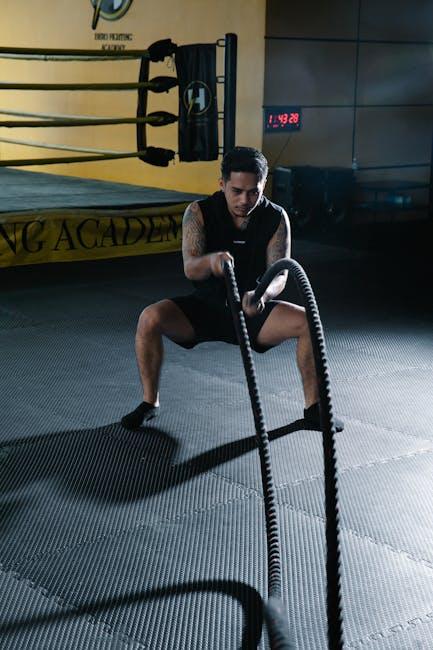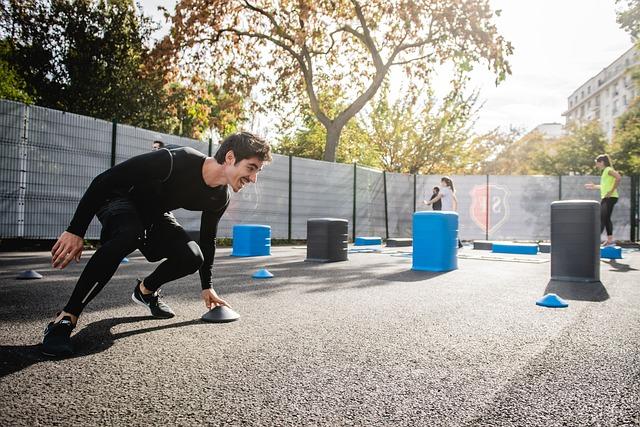In the bustling world of fitness, where trends come and go like the changing tides, high-intensity workouts have emerged as a shining beacon of promise. With their allure of rapid results and efficient time use, these sweat-inducing sessions have captivated the hearts of busy professionals, fitness enthusiasts, and casual gym-goers alike. But beneath the surface of this high-energy phenomenon lies a question that demands exploration: Are high-intensity workouts truly effective for everyone? As we delve into the science, benefits, and potential pitfalls of these rigorous routines, we aim to unravel the truth behind the hype. Join us on this journey as we navigate the complexities of fitness and discover whether high-intensity workouts are the universal key to health and vitality, or if they are best suited for only a select few.
High-Intensity Workouts: A Universal Solution or a Selective Fit
High-intensity workouts have surged in popularity, hailed as a potent way to enhance fitness levels in minimal time. However, the question remains: are they a one-size-fits-all solution? These workouts, characterized by short bursts of intense exercise followed by brief rest periods, are undoubtedly efficient for some. They offer benefits such as:
- Improved cardiovascular health
- Increased calorie burn
- Enhanced muscle endurance
Yet, it’s crucial to recognize that not everyone responds to this intensity in the same way. Factors like age, fitness level, and medical conditions can significantly influence one’s ability to engage in such demanding routines. For some, the intensity might lead to injuries or burnout rather than benefits. Therefore, while high-intensity workouts can be transformative for many, they may require adaptation or alternative approaches for others to ensure safety and effectiveness.

Understanding the Science Behind High-Intensity Exercise
At the core of high-intensity workouts lies the principle of pushing the body to its limits within a short span of time. This form of exercise is built on the concept of maximizing effort, thereby triggering the body’s rapid response mechanisms. When engaging in these workouts, the body experiences an increased heart rate and accelerated metabolism, leading to the burning of calories both during and after the session. Scientific studies have shown that such exercises can enhance cardiovascular health, improve muscle strength, and increase endurance by challenging the body to adapt to intense bursts of activity.
- Improved Cardiovascular Health: High-intensity workouts elevate heart rates, promoting heart and lung efficiency.
- Enhanced Metabolic Rate: The afterburn effect, or excess post-exercise oxygen consumption (EPOC), keeps metabolism elevated post-exercise.
- Muscle Strength and Endurance: Short, intense efforts push muscle fibers to grow and strengthen.
Despite these benefits, it’s essential to recognize that not all individuals may respond the same way to high-intensity workouts. Factors such as age, fitness level, and medical conditions can influence the effectiveness and safety of these exercises. Therefore, personalizing workout routines to align with individual capabilities and health conditions is crucial for optimizing results and minimizing risks.

Tailoring High-Intensity Regimens to Individual Needs
In the realm of fitness, one-size-fits-all rarely applies, especially when it comes to high-intensity workouts. To maximize their effectiveness, these regimens must be meticulously tailored to the individual’s unique physiology and lifestyle. Customizing intensity levels and incorporating diverse exercises can prevent burnout and reduce the risk of injury. Some may thrive with short bursts of intense activity, while others may require more gradual adaptations. Understanding one’s own limits and potential is key to crafting a program that not only pushes boundaries but also respects personal thresholds.
Key considerations for personalizing high-intensity workouts include:
- Fitness Goals: Whether aiming for weight loss, muscle gain, or endurance improvement, goals dictate the workout’s focus.
- Health Conditions: Pre-existing conditions or injuries necessitate modifications to ensure safety.
- Experience Level: Beginners may need longer rest periods, whereas seasoned athletes might require more challenging variations.
- Time Commitment: Realistic scheduling can ensure consistency and sustainability in the long term.
Ultimately, the art of tailoring high-intensity workouts lies in the balance between pushing limits and honoring one’s own pace.

Expert Tips for Maximizing High-Intensity Workout Benefits
To truly harness the power of high-intensity workouts, it’s essential to implement strategies that amplify their benefits. Here are some expert tips to help you get the most out of your sessions:
- Focus on Form: Prioritize proper technique over speed to prevent injuries and ensure you’re targeting the right muscle groups. This helps in maximizing the effectiveness of each exercise.
- Customize Your Routine: Tailor your workouts to your fitness level and goals. If you’re a beginner, start with shorter intervals and gradually increase the intensity as your stamina improves.
- Incorporate Variety: Mix different exercises to challenge various muscle groups and keep your workouts engaging. This not only prevents boredom but also ensures a well-rounded fitness regimen.
- Prioritize Recovery: Allow your body ample time to recover by including rest days and focusing on nutrition and hydration. This helps in repairing muscles and prevents burnout.
By following these expert insights, you can effectively enhance the benefits of your high-intensity workouts, leading to improved endurance, strength, and overall fitness.
The Conclusion
In the ever-evolving landscape of fitness, high-intensity workouts stand as a testament to the relentless pursuit of physical excellence. Yet, as we’ve explored, their effectiveness is as varied as the individuals who engage with them. What resonates for one may not echo the same for another, highlighting the beauty of personalized fitness journeys. As we step back and consider the broader tapestry of health and wellness, it becomes clear that the key lies not in a one-size-fits-all approach, but in understanding one’s unique needs and goals. Whether you find yourself sprinting towards new heights or embracing a more moderate pace, remember that the most effective workout is the one that keeps you moving forward. So, lace up your shoes, tune into your body’s rhythm, and embark on the path that feels right for you. The journey is yours to shape.


































